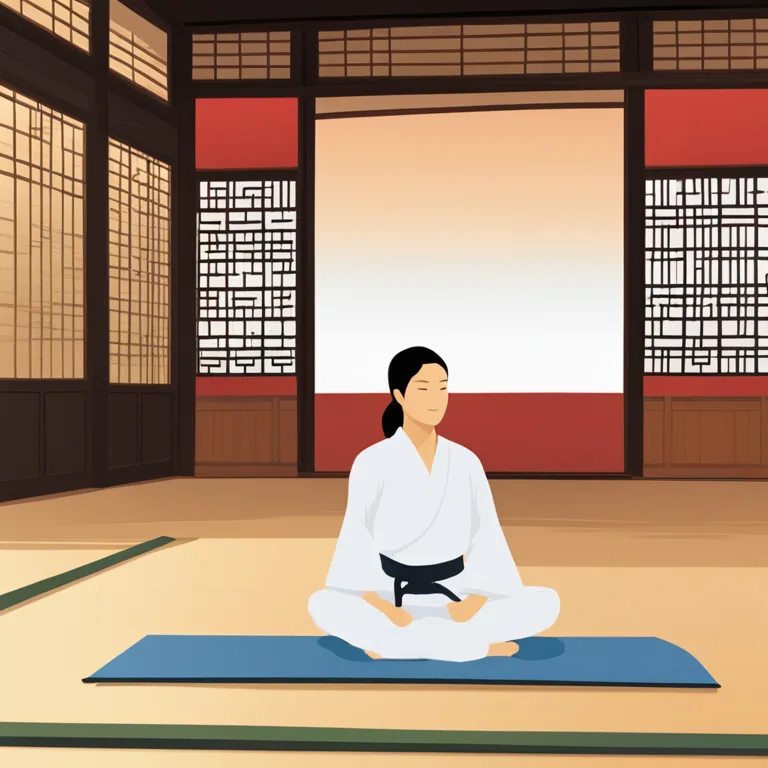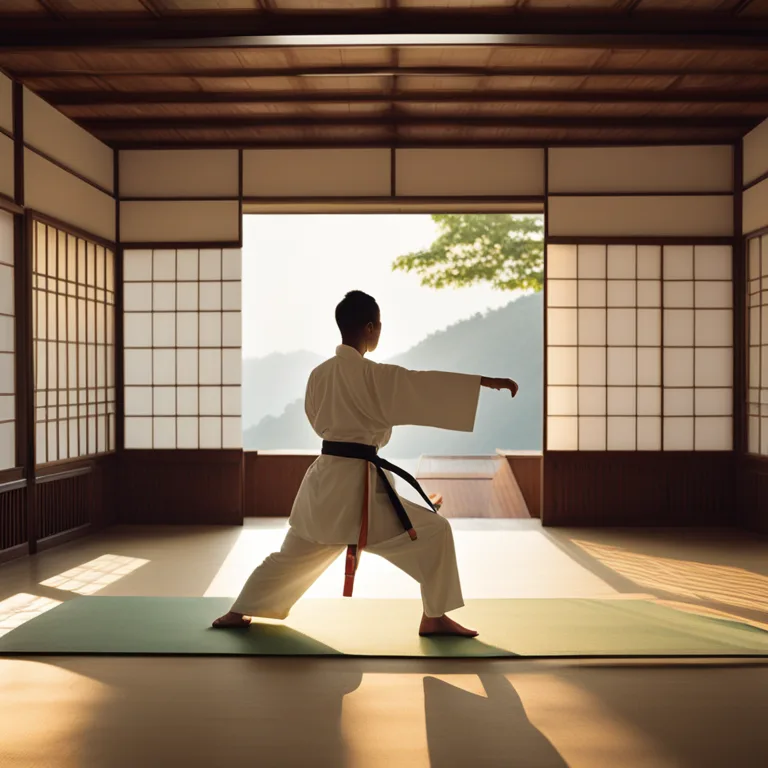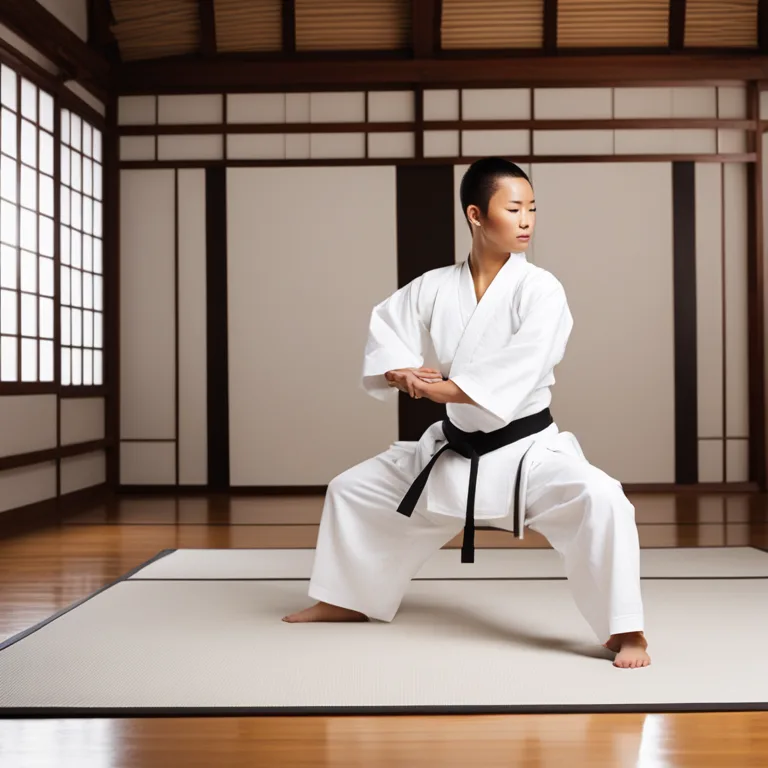
Karate Meditation: Serenity in Motion
Discover the inner peace and focus found through karate meditation practices, integrating martial arts and mindfulness.
article by Hina Kurosawa
Harmony of Body and Mind
Meditation techniques within karate offer a unique blend of physical discipline and mental concentration. As a martial art, karate emphasizes not only combat techniques but also the development of personal character. This integration naturally extends to its meditative practices, where the aim is to achieve a state of "mushin," or no-mind, where the practitioner's mind is free from scattered thoughts and disturbances, achieving a state of calmness and clear focus. This starts with mokuso, a common practice at the beginning and end of karate classes designed to clear the mind and prepare the body for rigorous physical activity or to calm down after the session.

Principles of Breathing
A fundamental aspect of karate meditation is proper breathing. The method known as "ibuki" focuses on controlled, deep abdominal breaths. This breathing style aims to unite the body and mind, channeling inner strength and fostering greater concentration. By mastering ibuki, karatekas (karate practitioners) learn to modulate their breathing in line with physical movements, which is essential for executing techniques with power and precision. The synchronization of breath with movement also cultivates a meditative rhythm, facilitating a deeper state of inward focus.

The Zen Connection
Zen Buddhism has had a profound influence on the philosophical underpinnings of karate meditation. Zen emphasizes direct experiences and intuition over theoretical knowledge, making it an excellent framework for the "do" (way) in karate-do. Practitioners often employ Zen meditation (zazen) techniques to enhance mindfulness and to confront the mind's restlessness directly. Sitting quietly in the seiza position, karatekas strive to observe their thoughts without attachment, allowing them a mental clarity that can improve their martial arts performance.

Kata as Moving Meditation
In karate, kata—pre-arranged sequences of movements—are used not only to practice form and technique but also as a method of meditation. Each kata is performed with deliberate, focused movements, encouraging the karateka to be fully present. The perfection of these sequences requires a meditative mindset, where the external and internal distractions are set aside to achieve a unity of purpose and motion. This form of dynamic meditation allows practitioners to engage in a physical activity while honing their mental discipline.

Visualization and Focus
Visualization is another technique used within karate to enhance meditation. Karatekas may visualize an opponent during kata practice or focus on visualizing the successful application of techniques. This form of meditation sharpens the mind, preparing the practitioner for actual combat scenarios by creating a mental rehearsal space where strategies and reactions can be honed. Combining visualization with physical practice leads to a more profound, ingrained level of skill and preparedness.
Convergence of Practice and Life
Karate meditation extends beyond the dojo (practice hall). The discipline learned on the mat seeps into daily life, teaching practitioners to maintain balance and equanimity amidst life's challenges. Many karatekas apply their meditative practices to manage stress, enhance focus, and approach their life's tasks with a calm and clear mind. As such, karate meditation becomes a philosophy of life, advocating for presence, awareness, and the continuous pursuit of personal betterment.
Published: 12/20/2023
Modified: 12/20/2023
More predictions
Come back here soon to learn more about yourself and your future


Unlocking Meditation Techniques
Discover various meditation techniques to enhance mindfulness and spiritual well-being. This article introduces a range of practices suitable for both beginners and seasoned practitioners.


Meditation Techniques & Anxiety
Discover effective meditation practices to soothe anxiety and foster a sense of peace in your daily life.


Meditative Focus Techniques Explored
Enhance your concentration through effective meditation practices designed for mental clarity and focus.